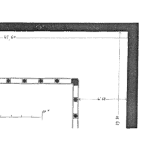
Guest Post by Daniel Burrus (first posted on CERM ® RISK INSIGHTS – reposted here with permission)
You read that headline right: everything does suck! And in this article, I’m going to give you the solid reasons why this makes me both optimistic and excited about our future!
Think to yourself: On any given day, how many times do you hear someone grumbling about their phone not working well, traffic patterns on their way to work driving them insane, how a business of any kind inconvenienced them by having poor customer service, or a government institution – commonly one like the DMV – putting them in a sour mood?
[Read more…]










